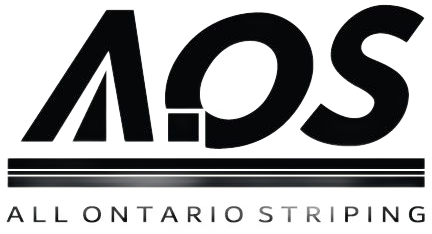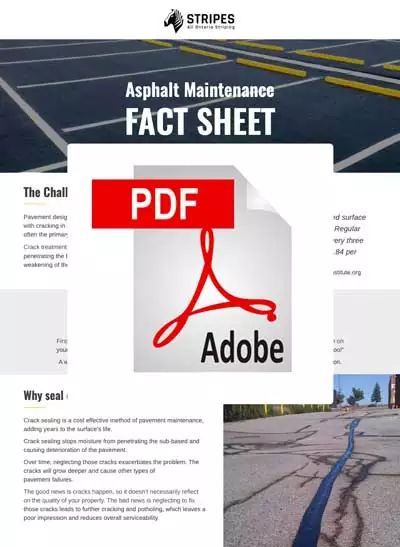Got a crack?
We'll handle it before it
becomes a bigger problem.
Why crack routing & sealing matters
Small pavement cracks become big, expensive problems fast. Water, salt and freeze-thaw cycles work their way down through unsealed cracks and destroy the base — the start of potholes, pavement sinking and costly repaving. Crack routing and sealing is the most cost-effective preventive treatment: it keeps moisture out, slows deterioration, and buys you years of usable pavement.
We do this work for parking lots, municipal roads, drive aisles, industrial yards, playgrounds and sport courts across the GTA and Southern Ontario.
What we do —
Plain Language
- Route — we cut a uniform, clean reservoir along the crack with our routing machines. That creates a controlled space for the sealant to sit and move with the pavement.
- Clean — dust, loose aggregate and vegetation are removed with vacuums and high-pressure air/water recovery systems so the sealant bonds properly.
- Fill/Seal — we install a flexible crack sealant (hot-pour rubberized sealant or specialty cold pour where required) and tool it to finish. The result is a flexible, watertight joint that moves without splitting.
- Optional surface prep — for large jobs we pair crack sealing with joint cleaning, minor patching or microsurfacing to maximize life extension.
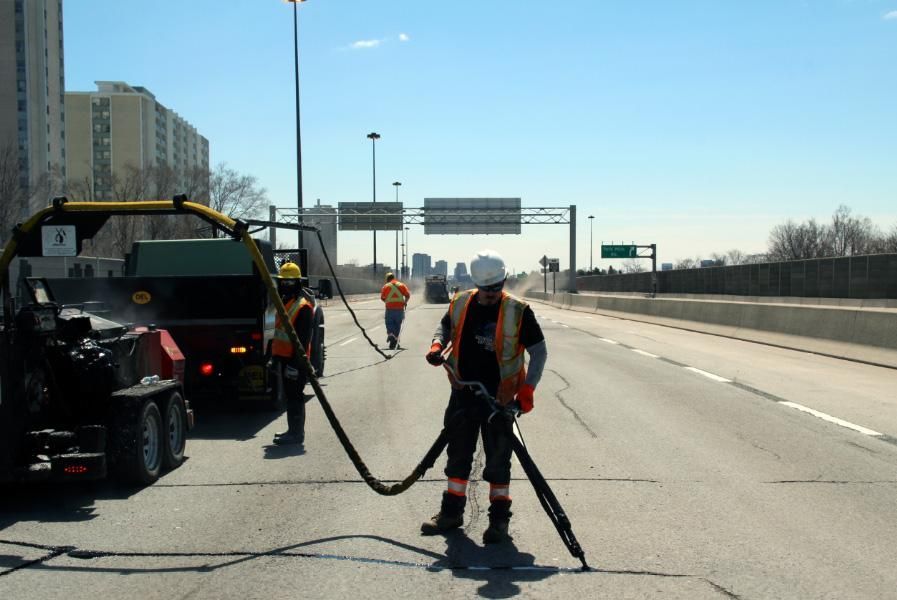
CRACK SEALING VERSUS CRACK FILLING
CRACK SEALING
Crack sealing is a more intensive operation preventing water from damaging the pavement. We route the crack and place high-quality sealant inside.
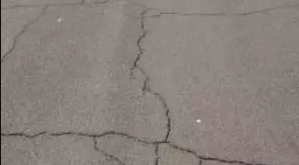
CRACK FILLING
Crack filling is a less intensive procedure. We place a filler into the crack to reduce water infiltration to reinforce the pavement.
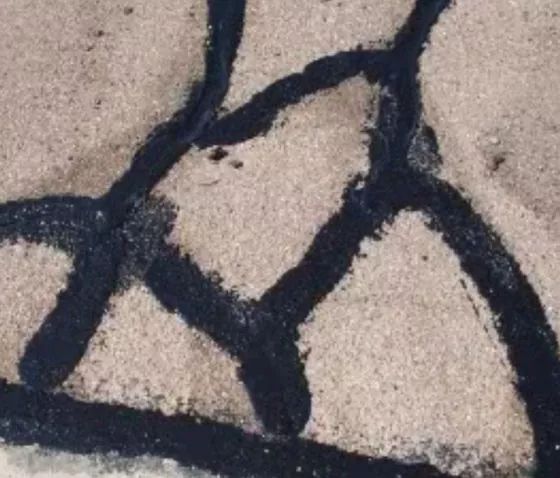
Is it too late to take care of cracks?
That depends on the state of decay. If your pavement surface has an extreme state of decay, crack filling and/or sealing will do little to delay the need for more extensive corrective actions.
Download our Fact Sheet on Asphalt Maintenance
MATERIALS & EQUIPMENT WE USE
- Sealants: hot-pour rubberized asphalt crack sealants (industry standard), and cold-applied polyurethane options for sensitive areas.
- Routers: self-propelled routing machines and hand-routers for tight spots.
- Cleaning gear: industrial vacuums, compressed air, water recovery systems (no mess).
- Heating & dispensing: melters and direct-pour machines with thermostatic control for consistent placement.
- Safety & traffic control: cones, signs, flaggers, and TTC-compatible traffic control plans when needed.
Benefits for property owners & municipalities
- Stops water infiltration and protects the pavement base
- Reduces need for costly full-depth repairs or premature resurfacing
- Improves safety by preventing uneven cracks and tripping hazards
- Fast, targeted, and budget-friendly lifecycle extension for pavement assets
- Clean, professional finish that can be coordinated with line painting work
Call us for a Free Estimate: 437-973-2292
How We Approach Each Job (Our Process)
- Survey & estimate: on-site inspection, crack mapping, and a clear, written proposal.
- Prep & traffic control: we set up safe work zones that minimize disruption.
- Routing & cleaning: route to the correct width/depth, remove debris, dry the crack.
- Sealing: apply the selected sealant to spec, tooling for bond and finish.
- Final inspection & handoff:
we inspect with you, leave the site tidy, and provide maintenance recommendations.
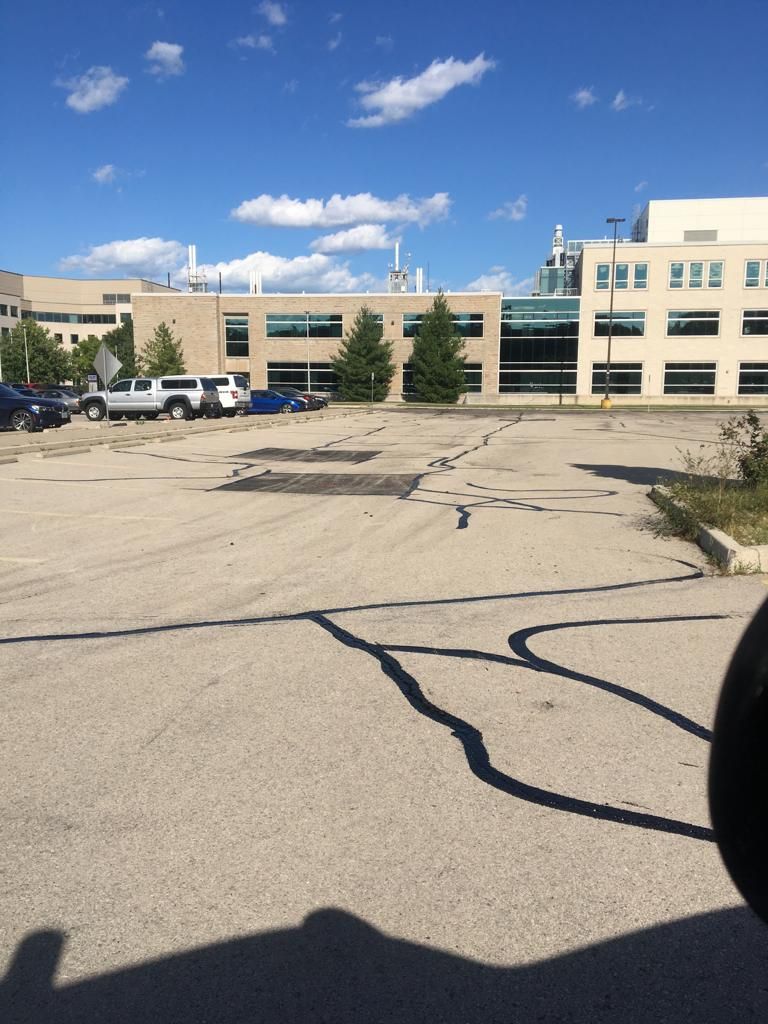
Typical specifications we follow
- Route dimensions sized to crack width and pavement type (we recommend an engineered reservoir for long cracks).
- Sealants heated and applied to manufacturer temperature recommendations.
- Joints and cracks routed to provide a uniform backing and tooling surface for optimal performance.
(We can adapt to municipal spec sheets or GC contract language on request.)
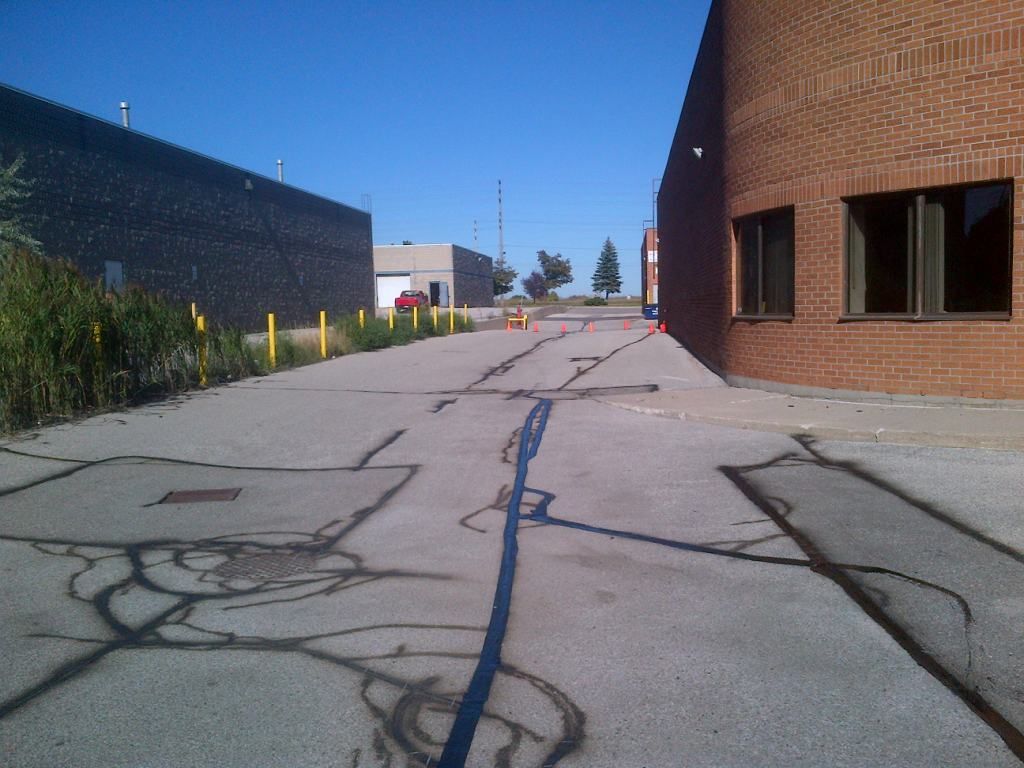
Maintenance recommendations
- Inspect sealed cracks annually (spring or fall).
- Re-seal where sealant shows significant wear, gaps, or adhesion loss.
- Combine crack sealing with targeted patching and regular pavement inspections to maximize pavement life.
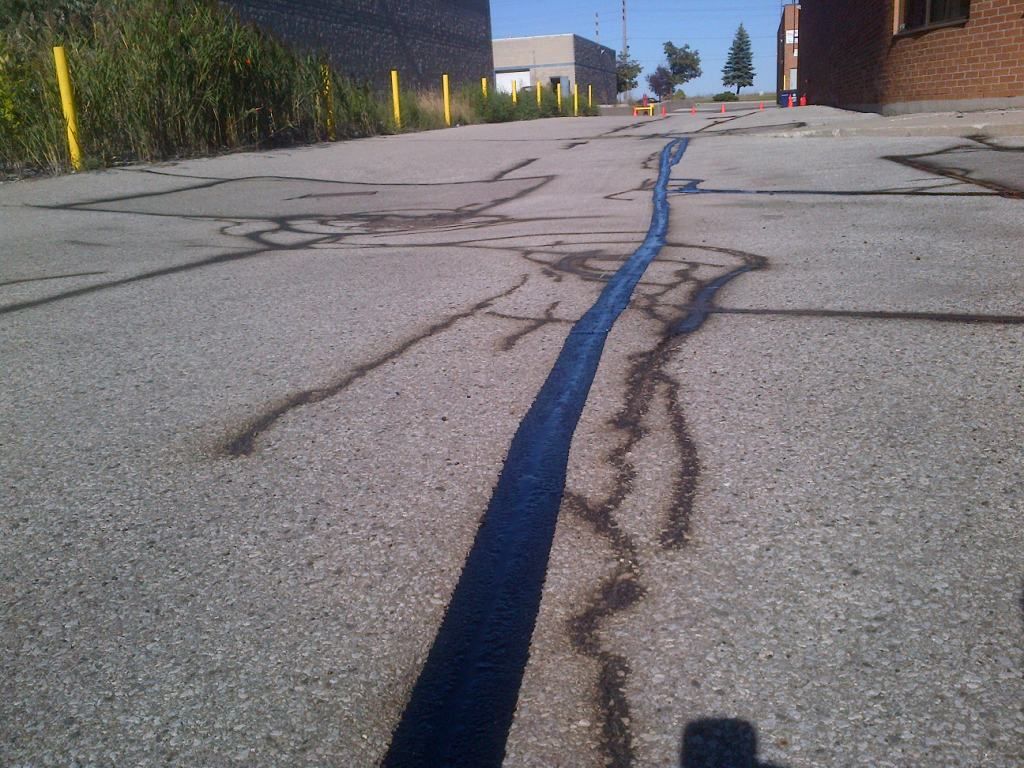
FAQs
What’s the difference between crack sealing and crack filling?
Crack routing + sealing creates a reservoir and installs a flexible, bonded sealant designed to move with the pavement. Crack filling is a simpler pour that fills surface voids without routing; routing + sealing is longer-lasting.
Will sealed cracks be visible?
Yes — the sealed line is usually visible but neat. We can match aesthetics to surrounding pavement and coordinate line painting if needed.
Can you work in winter?
Some sealants and techniques work at lower temperatures; we’ll advise the best timing and method for your site and budget.
Do you guarantee the work?
Yes — we stand behind our workmanship. Our proposals include warranty terms based on materials used and scope (details provided on every quote).
Protect your pavement — Get a free crack assessment for your parking lot or road.
For up-to-date photos and videos, please see our Instagram or Youtube!
